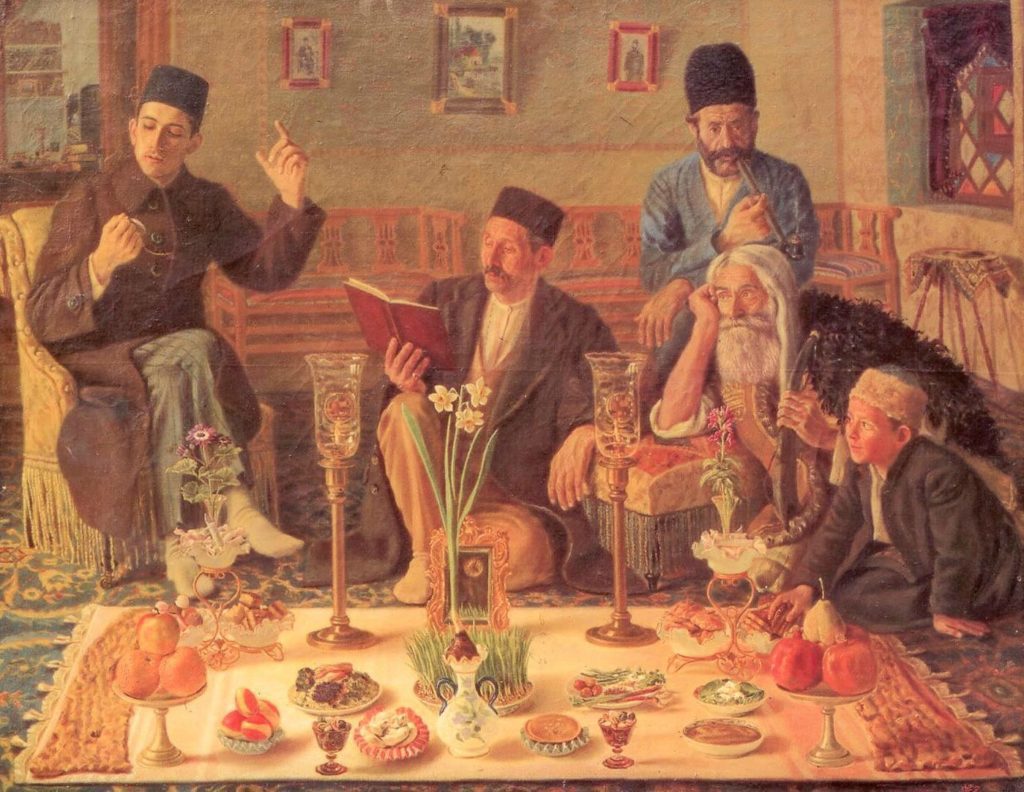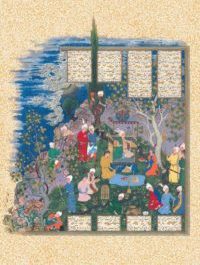Nowruz – A Celebration of the New Year
Spring has sprung! And for Persian people around the world, the spring equinox brings with it the celebration of Nowruz. Read this week’s blog to learn the symbolism behind this ancient holiday’s customs.
Nowruz, the Persian New Year which directly translates to “New Day,” finds its roots in the mythical history of ancient Persia. According to Ferdowsi’s epic poem Shahnameh, Nowruz came about during the reign of King Jamshid. Having heard the prophecy of a winter that would wipe out his people, King Jamshid ascended into the heavens to evoke his radiate and save his kingdom. Over the centuries, many customs have stood the test of time and continue to be a part of this two-week-long celebration.
To prepare for the new year, Persians cleanse their spaces and material possessions as well as their spirits and minds. Households do “khoone takooni,” which is similar to what we in the west call spring cleaning. New clothing is purchased and the house is filled with fresh flowers. Furthermore, “Chaharshanbe Suri” is celebrated as a prelude to the new year. On the eve of the Wednesday before Nowruz, bonfires are built to be jumped. As one jumps over the fire, he or she will recite the poetic line “my yellow is yours, your red is mine.” The desire is for the fire will take away all the bad energy from the previous year and replace it with positive energy for the year ahead.
During the thirteen days of Nowruz, family and friends visit each other’s houses. These visits include a lot of food, tea, and sweets. Every house has its own “sofre haft-sin.” This table holds a series of symbolic items, all starting with the letter S in the Persian alphabet. There is the Sabze, sprouts that are grown indoors and represent rebirth/growth. Samanu, a sweet wheat germ pudding, exemplifies power and strength. Senjed, known as a Persian olive, signifies love. Serke is vinegar and indicates patience. Sib, or apple, embodies beauty. Sir is garlic and implies health, while Sumac personifies the sunrise. In addition to these seven components, you will often also find a mirror (self-reflection), candles (enlightenment), painted eggs (fertility), goldfish (progress), coins (wealth), hyacinths and tulips (changing of the seasons), cookies (sweetness), and a holy book and/or book of poetry (wisdom). All these elements are reminders for resolutions to carry into the new year.
“Sizdebedar” is the thirteenth and final day of Nowruz celebrations. Often, families will reconvene with nature (or the city’s closest park) and enjoy an outdoor picnic. It is also typical that the Sabzeh from the “sofreh haft-sin” is tossed into the local watering hole. There is a custom for the single women who wish to find a life partner; it involves tying a knot with the blades of grass before throwing it away for good luck.
Even though different regions have their own additional rituals to celebrate the centuries old Nowruz festival, one thing that they all have in common is the importance placed on community. This is the time of year for friends and family to come together and celebrate the moments they are granted together.



